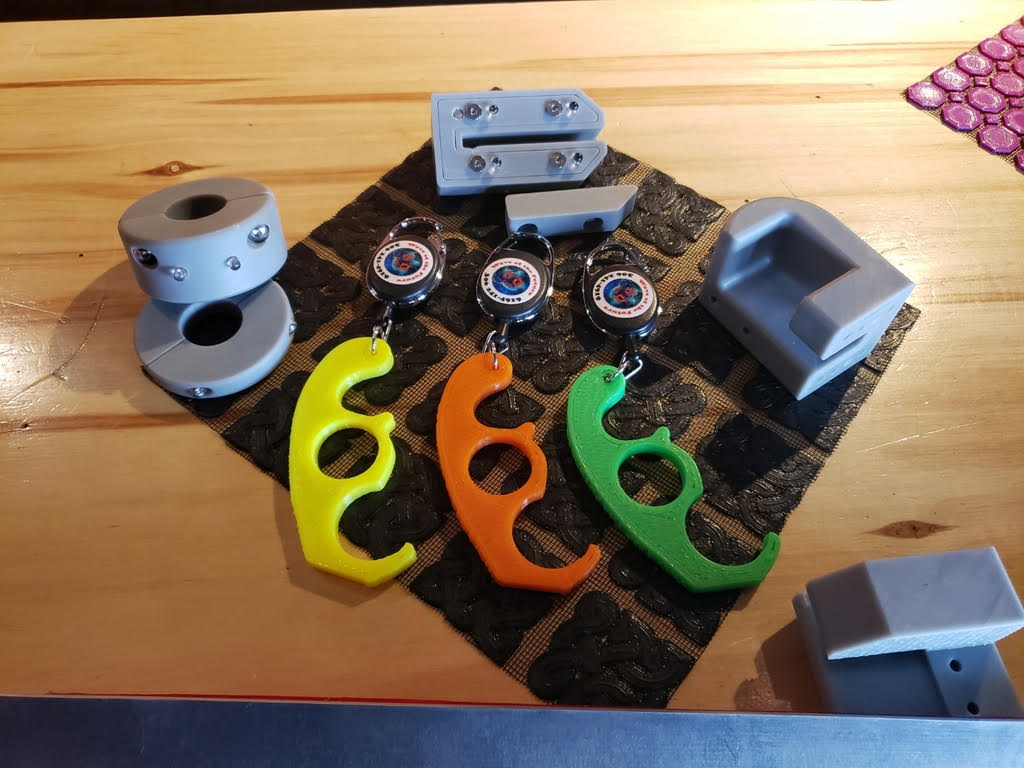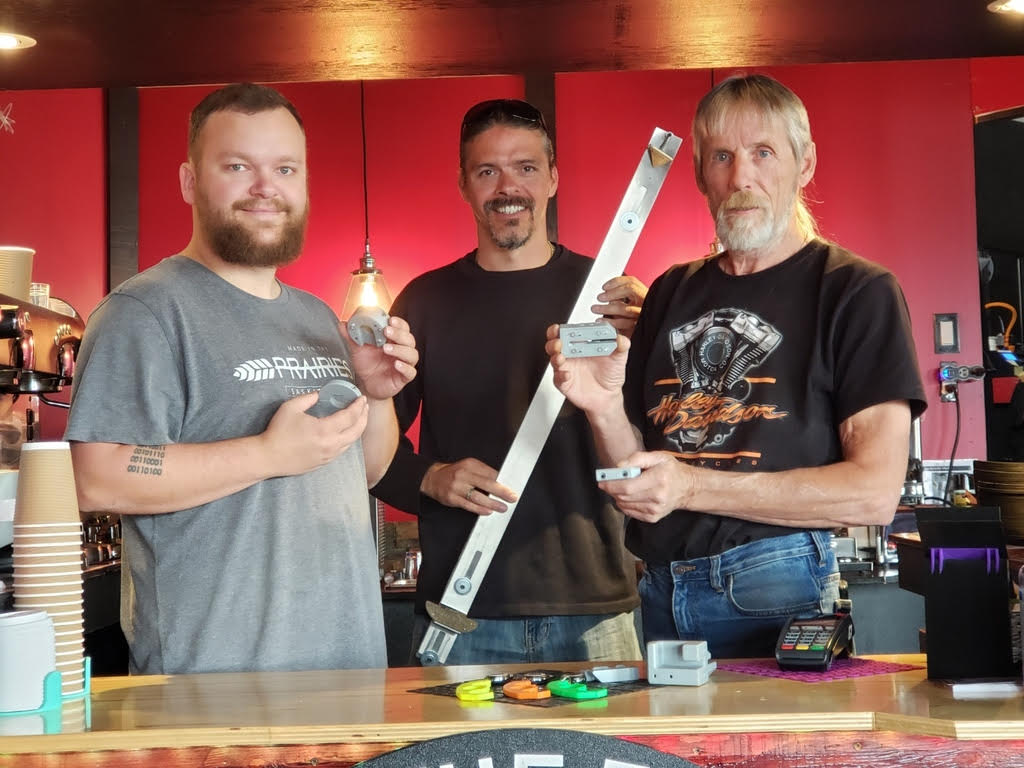Randy Janes and his team at Wave of the Future 3D are always inventing something. Whether it’s a seven-foot-tall Groot or miniature Yoda, there really is no limit to what they create using their 3D printers.

They are now applying that skill set to their take on ultraviolet (UV) light door-handle disinfecting technology.
Janes, the owner, says the idea came to be about a year ago. Janes says he’s not a fan of how often one could have to touch items such as door handles in public washrooms.
He says when the coronavirus pandemic hit, he was instructed to bring the concept forward. It’s an idea that had been in development for roughly a year.
Janes says he and his team are using their advanced printing system to make the disinfecting devices.
“Ever since COVID-19 came up, we thought it would be the perfect time to introduce it to the world,” said Janes.
The device is two separate items attached to the top and bottom of the door handle. Using motion sensors and UV light, it kills 99.9 percent of bacteria left after a person touches the surface. Janes says the item can be modified to fit all types of door handles.
He says they also have a door-opening device that goes from the door handle to the floor. Using your foot to push the lever, the handle turns, opening the door.
There is also a device that you can wear like a keychain at your side and use it as a hook to open doors.
“It saves us a lot of man-hours, a lot of time and resources you don’t need,” said product developer Lance Greene. “Cloths and disinfectant material that (doesn’t) have to be constantly re-applied.”

Janes says his team includes scientists at the University of Saskatchewan and Sask Polytech.
Joseph Blondeau with the Saskatchewan Health Authority (SHA) says it has been proven in the science lab that UV lights work against viruses such as the common cold and the virus that causes COVID-19 by providing the necessary surface decontamination.
“UV light is known to destroy the bonds that hold nucleic acid (DNA, RNA) together and as such prevent critical functions from occurring or preventing replication,” said Blondeau, the SHA provincial lead for clinical microbiology. “It causes damage to the molecules so that the bugs can’t replicate.
“If they can’t replicate, they die.”
A study done by the American Journal of Infection Control in 2014 concluded that handheld devices that emit ultraviolet light could successfully inactivate bacterial spores on surfaces within seconds.
“Many microbial cells are highly sensitive to killing by blue light due to accumulation of naturally occurring photosensitizers (molecules that deactivate the molecules in the DNA or RNA of a virus because of a chemical change),” said a report completed by the National Institutes of Health in 2013. “Certain wavelengths has been found to be effective in the inactivation of pathogens in both laboratory and clinic.”
When someone touches a door handle that has any kind of virus, that surface now carries the virus, and if someone else touches that area and then their face, they could infect themselves.
“Further development of blue light inactivation approaches could lead to potential applications as decontamination systems for air, contact surfaces, and medical instruments within the clinical environment,” the report read.
The report also says the light is not harmful to humans.
“Light based anti-infective therapies have become a rapidly growing area of interest in recent years,” said the report.
“The reasons for this rise in interest are manifold; multi antibiotic resistance is the predominant growth-driving factor, but other relevant considerations may be the public distrust of big-pharmaceutical companies and their products, the desire to use — natural therapies and blue light is considered somewhat similar to sunlight; and the rapid microbial killing typically seen in phototherapy; so when the light is switched off the killing is done.”
The report says it is difficult for microbes to develop resistance to UVC light (ultraviolet C light) so the treatment remains effective over time.
Janes says the team had planned to launch their crowdfunding campaign on Tuesday but decided to delay it. During the 45-day campaign, they are aiming to get the word out globally. The funds raised will be going towards a bigger facility for mass production, depending on how well the devices sell.
“Getting awareness around the world, as big of coverage as we can and also doing marketing research at the same time (and making modifications if need be,” Janes said of the team’s aim.
Blondeau says inventions that can be used to combat the coronavirus are encouraged as long as they are safe and are proven. It’s what people can do at the moment while the world awaits a cure or vaccine for COVID-19.
“Let’s see the ingenuity of what may help prevent the spread of this virus. Let’s see the evidence and if it works … then see it put into use.”






Comments